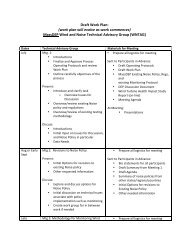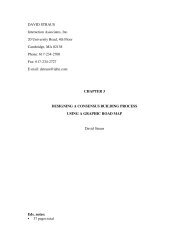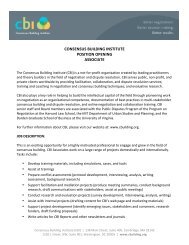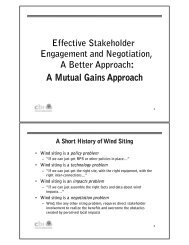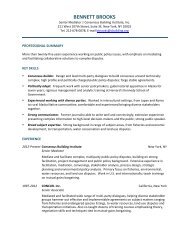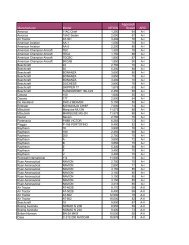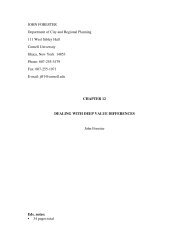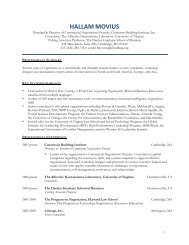Vegetated Geogrids
Vegetated Geogrids
Vegetated Geogrids
You also want an ePaper? Increase the reach of your titles
YUMPU automatically turns print PDFs into web optimized ePapers that Google loves.
IntroductionThe purpose of this document is toprovide an overview of the engineeredapproaches currently being utilized tomanage erosion along shelteredshorelines. In their natural state,shorelines tend to be dynamic, cyclingthrough periods of erosion and accretionin response to changes in weatherpatterns and sediment supply. Alongdeveloped shorelines, such as those ofthe Hudson River Estuary, the dynamicnature of shorelines often conflicts withrequirements to protect private propertyand infrastructure. In these areas avariety of engineered erosion controlapproaches are employed as a way ofreducing or eliminating further land loss.Designing an appropriate shoreprotection measure for a particularlocation reflects a delicate balancebetween the required protection leveland factors such as cost, aesthetics, andenvironmental impact.In general, the lower energy alongsheltered coastlines allows for greatercreativity in designing shore protectionprojects; therefore a variety of differentengineering approaches have beendeveloped. These approaches rangefrom shoreline hardening via bulkheads,revetments, gabions and other structures,to softer more natural methods such asvegetative plantings. In 2007, theNational Academies Press released thereport, Mitigating Shore Erosion AlongSheltered Coasts, which advocated thedevelopment of a new managementframework within which decisionmakers would be encouraged to considerthe full spectrum of options available.The initial phase of this study begins toaddress some of the recommendationsmade in the report by first identifyingand documenting as many differentengineered shoreline stabilizationapproaches as possible. In subsequentphases, a more detailed treatment of theapproaches most applicable to theHudson River Estuary will be given.BackgroundThere are many potential causes ofshoreline erosion and bank instability.The U.S. Army Corps of Engineers(Davis and Maynord, 1998) explicitlyidentified the following seven, but notedthere are others as well: wind and boatwaves, boat induced currents, channelmeander, channel braiding, ice anddebris, water level fluctuations, and flowconstrictions. The Hudson River estuaryis significantly influenced by all of theabove. The diversity of the estuary issuch that distinct regions exist where oneor more of the processes may dominate.As a result, historically a variety ofapproaches have been taken tostabilizing the shoreline.Miller (2006) performed an inventory ofHudson River shorelines and proposed afive level classification scheme. Of theshorelines inventoried, 42% were hardengineered, 47% were natural, and 11%were natural with remnants ofengineering structures. The mostcommon shoreline structure was rip-rap(32%), followed by woody (29%) andunvegetated (16%) slopes. Thedominant substrate found within theregion was unconsolidated rock (52%),mud/sand (16%) and mixed soil/rock(12%). Historically in the Hudson RiverEstuary, as elsewhere, ecological impactwas rarely considered during the designof shore protection works. The moderntrend however is to place significantemphasis on such considerations.DRAFT




